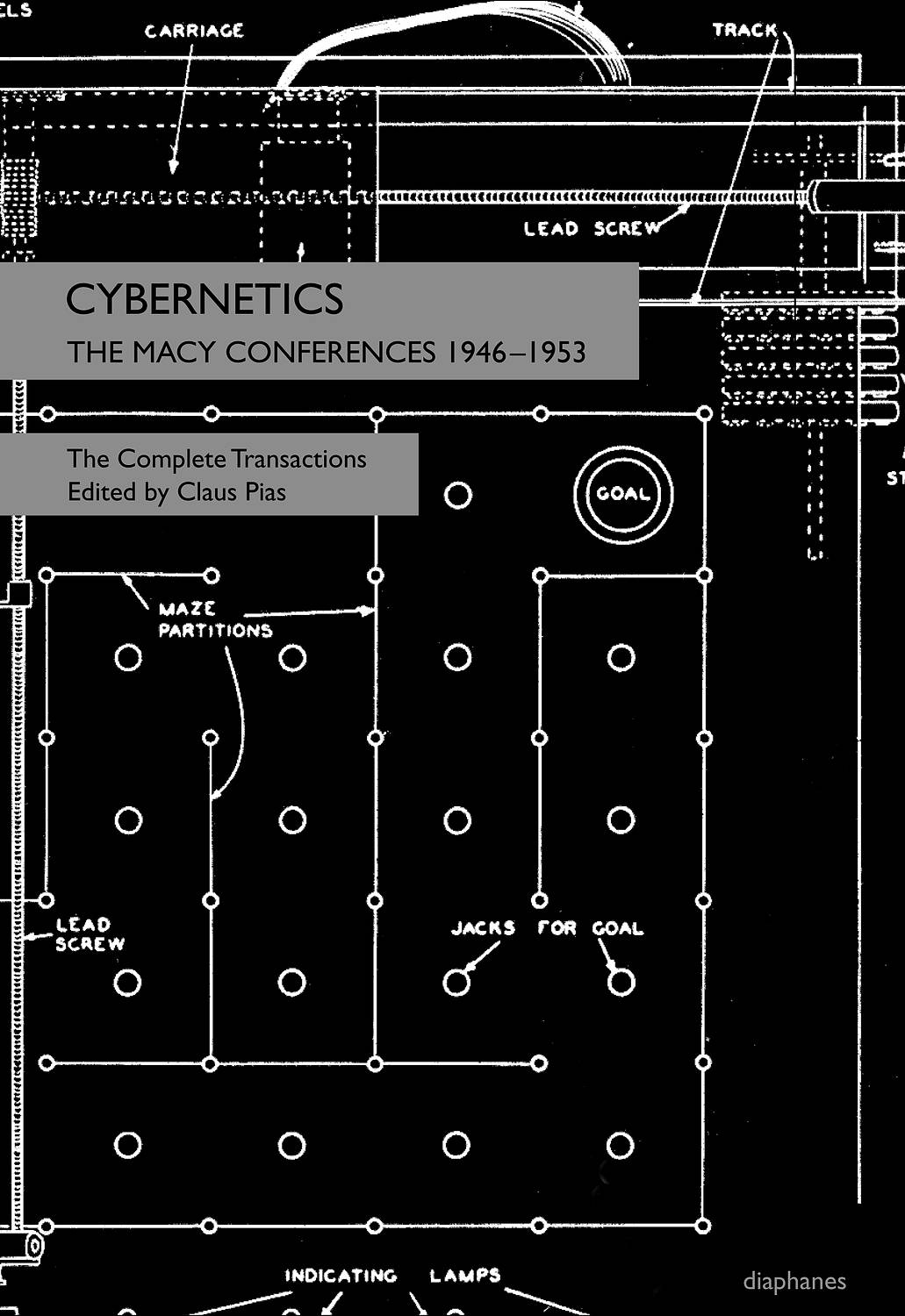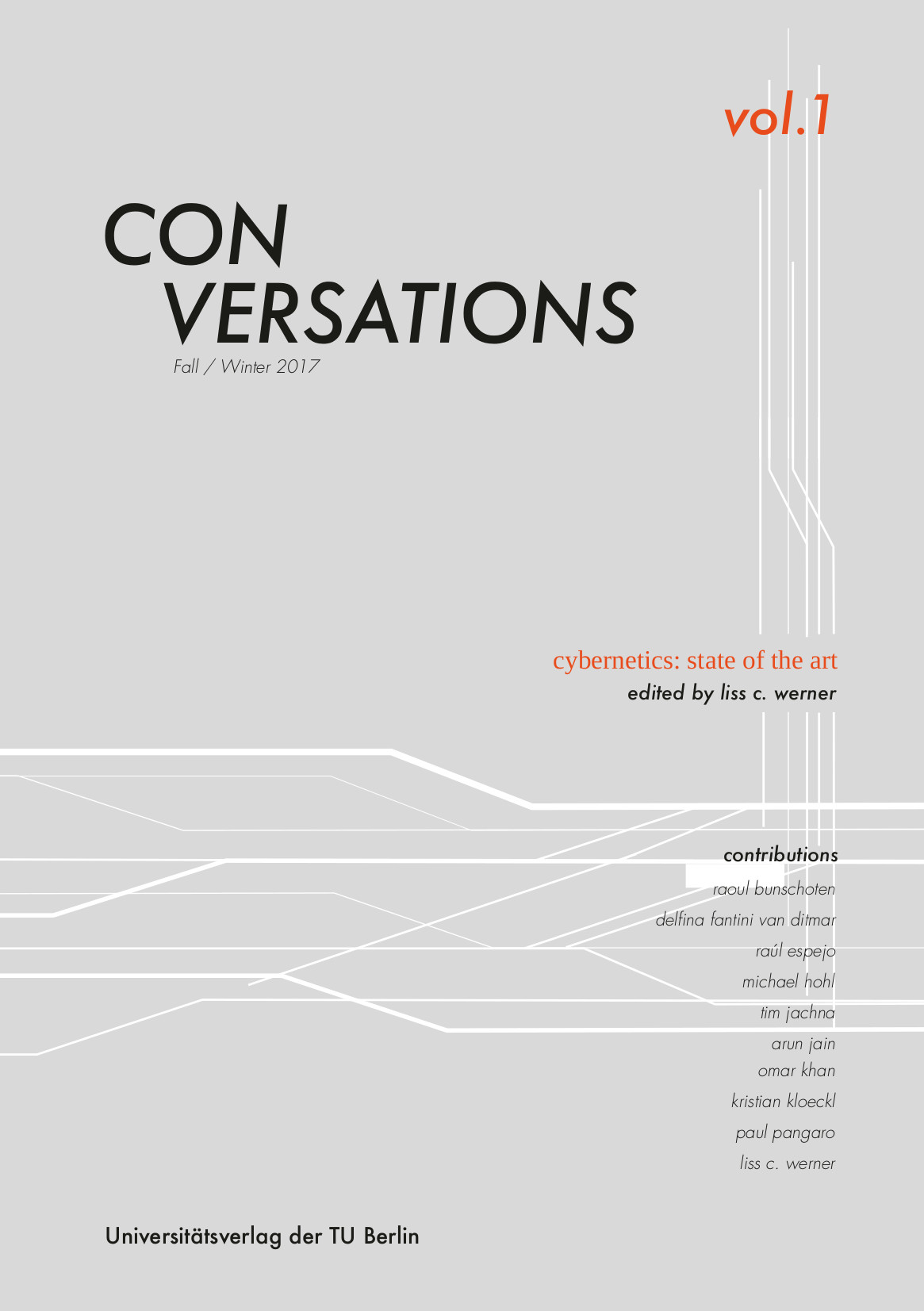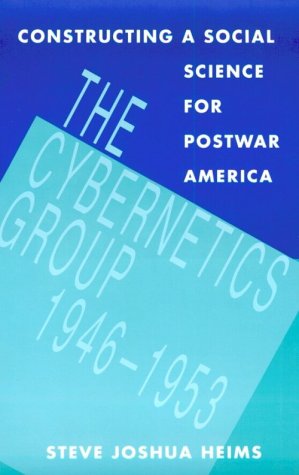Cybernetics: The Macy Conferences 1946-1953: The Complete Transactions (2016)
Filed under book, proceedings | Tags: · cybernetics, information, information theory, mathematics

“Between 1946 and 1953, the Josiah Macy, Jr. Foundation sponsored a series of conferences aiming to bring together a diverse, interdisciplinary community of scholars and researchers who would join forces to lay the groundwork for the new science of cybernetics. These conferences, known as the Macy conferences, constituted a landmark for the field. They were the first to grapple with new terms such as information and feedback and to develop a cohesive and broadly applicable theory of systems that would become equally applicable to living beings and machines, economic and cognitive processes, and many scholarly disciplines. The concepts that emerged from the conferences come to permeate thinking in many fields, including biology, neurology, sociology, ecology, economics, politics, psychoanalysis, linguistics, and computer science.
This book contains the complete transcripts of all ten Macy conferences and the guidelines for the conference proceedings. These transcripts are supplemented with an introduction by Claus Pias that charts the significance of the Macy conferences to the history of science.”
Edited and with a Foreword by Claus Pias
Publisher Diaphanes, Zürich, 2016
ISBN 9783037345986, 3037345985
734 pages
Publisher
Distributor
WorldCat
PDF (5 MB, updated on 2020-8-24)
Comment (0)Liss C. Werner (ed.): Cybernetics: State of the Art (2017)
Filed under book | Tags: · architecture, city, cybernetics, design, systems theory, theory, urban design, urbanism

“Driven by cybernetic thinking, this book engages with pressing questions for architecture, urban planning, design and automated infrastructure; in an age of increasing connectivity, AI and robotization and an evolutionary state of the Anthropocene – perpetuating angst-ridden anxiety as well as excitement and joy of a future, that we will be able to predict with less and less certainty. The book discusses cybernetic principles and devices developed in the late 20th century – mainly developed by Ross Ashby and Gordon Pask (second-order cybernetics), to learn from for a future of mutual relationship and conversation between man and machine.
The anthology reviews and previews cybernetics as design strategy in computational architecture, urban design and socio-ecological habitats – natural and artificial. It weaves together cybernetic-architectural theories with applications and case studies ranging from regional planning to the smart home.
Nine chapters written by an international group of authors are structured into two complimenting parts. While ‘A Concept and a Shape’ focuses on the history and theory of cybernetics, its temporary disappearance and future impact (Raúl Espejo, Michael Hohl, Paul Pangaro, Liss C. Werner), ‘System 5’ – relating to Stafford Beer’s project ‘Cybersyn’ – discusses applications, the role of the individual and human feedback; also with a strong theoretical underpinning (Raoul Bunschoten, Delfina Fantini van Ditmar, Timothy Jachna, Arun Jain, Kristian Kloeckl).”
With foreword by Omar Khan
Publisher Universitätsverlag der TU Berlin, Berlin, Nov 2017
Con-versations series, 1
Creative Commons BY 4.0 International License
ISBN 9783798329539
xxvii+173 pages
Steve Joshua Heims: The Cybernetics Group (1991)
Filed under book | Tags: · computing, cybernetics, history of computing, history of science, history of technology, information theory, machine, technology

“This is the engaging story of a moment of transformation in the human sciences, a detailed account of a remarkable group of people who met regularly from 1946 to 1953 to explore the possibility of using scientific ideas that had emerged in the war years (cybernetics, information theory, computer theory) as a basis for interdisciplinary alliances. The Macy Conferences on Cybernetics, as they came to be called, included such luminaries as Norbert Wiener, John von Neumann, Margaret Mead, Gregory Bateson, Warren McCulloch, Walter Pitts, Kurt Lewin, F. S. C. Northrop, Molly Harrower, and Lawrence Kubie, who thought and argued together about such topics as insanity, vision, circular causality, language, the brain as a digital machine, and how to make wise decisions.
Heims, who met and talked with many of the participants, portrays them not only as thinkers but as human beings. His account examines how the conduct and content of research are shaped by the society in which it occurs and how the spirit of the times, in this case a mixture of postwar confidence and cold-war paranoia, affected the thinking of the cybernetics group. He uses the meetings to explore the strong influence elite groups can have in establishing connections and agendas for research and provides a firsthand took at the emergence of paradigms that were to become central to the new fields of artificial intelligence and cognitive science.
In his joint biography of John von Neumann and Norbert Wiener, Heims offered a challenging interpretation of the development of recent American science and technology. Here, in this group portrait of an important generation of American intellectuals, Heims extends that interpretation to a broader canvas, in the process paying special attention to the two iconoclastic figures, Warren McCulloch and Gregory Bateson, whose ideas on the nature of the mind/brain and on holism are enjoying renewal today.”
Paperback edition appeared under the title Constructing a Social Science for Postwar America: The Cybernetics Group (1946–1953) in 1993.
Publisher MIT Press, 1991
ISBN 0262082004, 9780262082006
xii+334 pages
Reviews: N. Katherine Hayles (Hist Human Sciences, 1992), R.V. Jones (New Scientist, 1992), Carlos A. Martínez-Vela (2001).
PDF (3 MB, updated on 2018-7-25)
Comment (1)
